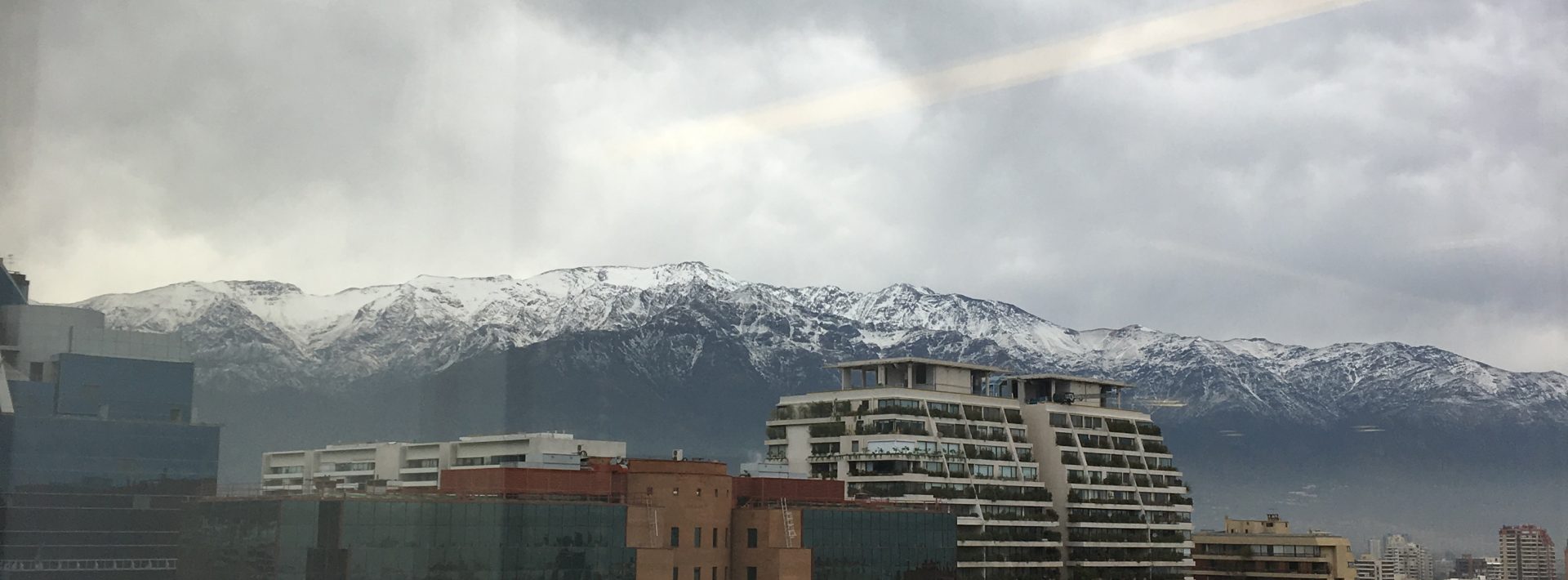MIT-Imperial Exchange: Exploring the city through field research
[fusion_text]By Milani Chatterji-Len
As a rising third-year on the systems track, I am thrilled to be working in London on hydraulic modeling. My project is geared toward improving flood prediction in less developed countries in the Himalayan region. I work with a diverse team of civil, mechanical, and earth science engineers, all of whom have a different role on the project team.
For my segment of the project, I use MATLAB to model the propagation of flood waves. After generating flood waves and simulating them, I attempt to create accurate predictions of their flow with hypothetical sensor readings.

A simulation generated using the kinematic wave equation of water flow rate along a river over time.
This week, I got the opportunity to move out of the office and into the field to work on more applied hydraulic modeling. Our team travelled to two test sites on the outskirts of London to install water level sensors that mechanical engineering UROPS and our postdoc had assembled together. The first fieldwork day we went to Silwood, another Imperial College campus in suburban London where there is a man-made lake and channel in the forest. After wading around a bit and fastening the sensor in place, we had completed sensor installation for the day.

A postdoc assembling the laser sensor in Silwood Park.

A UROP and PhD student preparing to measure water height in the channel in Silwood Park.
The next day, we travelled to Teddington, a posh neighborhood along the Thames River in southwestern London. Navigating the tube and trains starting at half past nine, coffee and metal sensor installation equipment in hand, we arrived at the site in the mid-morning and met up with an employee of the UK Environment Agency (the British equivalent of the US EPA).
Our team installed two sensors at this location, an acoustic one and a laser one, at both upstream and downstream locations along the Teddington locks. After installation, we headed to a traditional British pub for a lab group lunch before making our way back to Imperial’s main campus in the center of London.

Colorful flower baskets, common around London, lining the Thames River in Teddington where we installed two sensors.
In the following weeks, the sensors will continually collect water height measurements. The purpose of installing them around London is to ensure that the sensors are functioning properly before they are sent into the field in Tanzania, Nepal, and Somaliland, where my group collaborates with local communities to improve flood predictions. As I continue to develop my model in the coming weeks, I will hopefully be able to incorporate data collected from the sensors to test the model’s function.
This summer, MIT CEE undergraduates Abby Harvey and Milani Chatterji-Len are working in research labs at the Imperial College of London as part of the MIT International Research Opportunities Program (IROP).[/fusion_text]
Share on Bluesky

